- Home
- Alice Munro
Selected Stories
Selected Stories Read online
ACCLAIM FOR ALICE MUNRO’S
Selected Stories
“A wonderful sampling of vintage Munro.… For those who have never read her, there is no better place to begin. And for those long familiar with her writing, there remain surprises and rediscoveries.”
—San Francisco Chronicle
“She seeks to evoke the mysteries of real life and she succeeds brilliantly.”
—Los Angeles Times
“This season’s literary sensation … told with such perfect pitch that the results are stunning.”
—USA Today
“Meaty stories about love, marriage, discontent, divorce, betrayal, impulsive passion, second thoughts, deaths, even murder—stories with plenty of drama and surprise as well as reflection and meditation.”
—Wall Street Journal
“[Her fans’] gratitude for what she’s given them is exceeded only by their craving for what might come next. That sounds greedy, but when a writer this great just keeps getting better, what else can you do?”
—Newsweek
“[Munro’s stories] are made vivid with innumerable details of time and place. All her characters, even the minor ones, are given histories. And in the end we are witness to eruptions of emotional earthquakes, large and small.”
—Newsday
“An entire world caught in the amber of memory. [The stories] have a quality of folk art about them—its patient amplitude, sly humor, and hard materiality.”
—Village Voice
“Deeply imagined, almost awesome.… Munro’s sheer aptness, her precision of psychology and language, becomes the chief beauty of her work.”
—Washington Post Book World
“A rare pleasure … rich and complex … an excellent one-volume introduction to her work.”
—Boston Book Review
“Luminous.… Munro’s stories ride on tone and feeling: Merely summarizing one is like describing a villa by holding up its doorbell.”
—Vogue
“The collection of the year. ‘Here,’ as Dryden said of Chaucer, ‘is God’s plenty.’ ”
—Kirkus Reviews
FIRST VINTAGE CONTEMPORARIES EDITION, NOVEMBER 1997
Copyright © 1996, 1997 by Alice Munro
All rights reserved under International and Pan-American Copyright Conventions. Published in the United States by Vintage Books, a division of Random House, Inc., New York. Originally published in hardcover in slightly different form in the United States by Alfred A. Knopf, Inc., New York, and in Canada by McClelland & Stewart, Inc., Toronto, in 1996.
The stories in this collection were originally published in the following works:
Dance of the Happy Shades, copyright © 1968 by Alice Munro
(The Ryerson Press, Toronto).
Something I’ve Been Meaning to Tell You, copyright © 1974 by
Alice Munro (McGraw-Hill, Inc., New York).
The Beggar Maid, copyright © 1977, 1978 by Alice Munro (Alfred A. Knopf, Inc., New York).
The Moons of Jupiter, copyright © 1977, 1979, 1980, 1981, 1982 by Alice Munro
(Alfred A. Knopf, Inc., New York).
The Progress of Love, copyright © 1985, 1986 by Alice Munro (Alfred A. Knopf, Inc., New York).
Friend of My Youth, copyright © 1990 by Alice Munro (Alfred A. Knopf, Inc., New York).
Open Secrets, copyright © 1994 by Alice Munro (Alfred A. Knopf, Inc., New York).
The Library of Congress has cataloged the Knopf edition as follows:
Munro, Alice.
[Short stories. Selections]
Selected stories / Alice Munro. — 1st ed.
p. cm.
eISBN: 978-0-307-81462-3
I. Title.
PR9199.3.M8A6 1996
813’.54—dc20 96-4145
Random House Web address: http://www.randomhouse.com
v3.1_r3
for VIRGINIA BARBER
My essential support and
friend for twenty years
Contents
Cover
Title Page
Copyright
Dedication
Introduction to the Vintage Edition
Walker Brothers Cowboy
Dance of the Happy Shades
Postcard
Images
Something I’ve Been Meaning to Tell You
The Ottawa Valley
Material
Royal Beatings
Wild Swans
The Beggar Maid
Simon’s Luck
Chaddeleys and Flemings
Dulse
The Turkey Season
Labor Day Dinner
The Moons of Jupiter
The Progress of Love
Lichen
Miles City, Montana
White Dump
Fits
Friend of My Youth
Meneseteung
Differently
Carried Away
The Albanian Virgin
A Wilderness Station
Vandals
Bibliographical Note
About the Author
Other Books by This Author
Introduction to the Vintage Edition
Like many writers, I get letters from people who would like some brass-tacks information. Should I consider writing as my career? some ask. How much yearly income can I expect as a writer? How much education should a writer have? Is it necessary to work on a computer? Have an agent? Associate with other writers?
Some clarifying statements about my work are requested by others. What do you consider to be your basic themes? Your major strengths/weaknesses? Why do you choose to write short stories instead of novels? Do you write from a feminist perspective, and if not, why not? How do you feel that you contribute to the view of Canada held by a reader inside/outside the country? How has your fiction grown or progressed during your career? Do you prefer to write about relationships between people rather than important events, and if so, why? Do you prefer to write about rural and small-town people rather than sophisticated people, and if so, why? Are you a regional writer?
All this is rather flattering because it assumes that I am a person of brisk intelligence, exercising steady control on a number of fronts. I make advantageous judgments concerning computers and themes, I chart a course which is called a career and expect to make progress in it. I know what I am up to. Short stories, yes. Novels, no. I accept that rural folk are never sophisticated and sophisticates are never rural, and I make my choice. Also I keep an eye on feminism and Canada and try to figure out my duty to both.
This isn’t exactly the kind of writer I’d like to be, but I wouldn’t mind being a little more that way. In control, and pretty certain about what is going on, when I sit down with a pen and scribbler to do a first draft. Of course, if I was that kind of writer I might not know what a scribbler was, and I would pick up a pen only to write checks and autographs.
I am forced, in writing this introduction, to give the whole matter some thought, and I might as well start by answering a question.
I did not “choose” to write short stories. I hoped to write novels. When you are responsible for running a house and taking care of small children, particularly in the days before disposable diapers or ubiquitous automatic washing machines, it’s hard to arrange for large chunks of time. A child’s illness, relatives coming to stay, a pileup of unavoidable household jobs, can swallow a work-in-progress as surely as a power failure used to destroy a piece of work in the computer. You’re better to stick with something you can keep in mind and hope to do in a few weeks, or a couple of months at most. I know that there are lots of women who have written novels in the midst of domestic challenges, just as there are men (and women) who have written
them after coming home at night from exhausting jobs. That’s why I thought I could do it too, but I couldn’t. I took to writing in frantic spurts, juggling my life around until I could get a story done, then catching up on other responsibilities. So I got into the habit of writing short stories.
In later years my short stories haven’t been so short. They’ve grown longer, and in a way more disjointed and demanding and peculiar. I didn’t choose for that to happen, either. The only choice I make is to write about what interests me in a way that interests me, that gives me pleasure. It may not look like pleasure, because the difficulties can make me morose and distracted, but that’s what it is—the pleasure of telling the story I mean to tell as wholly as I can tell it, of finding out in fact what that story is, by working around the different ways of telling it.
Generally speaking, these don’t seem to be very straightforward ways. But I think they’re necessary.
The reason I write so often about the country to the east of Lake Huron is just that I love it. It means something to me that no other country can—no matter how important historically that other country may be, how “beautiful,” how lively and interesting. I am intoxicated by this particular landscape, by the almost flat fields, the swamps, the hardwood bush lots, by the continental climate with its extravagant winters. I am at home with the brick houses, the falling-down barns, the occasional farms that have swimming pools and airplanes, the trailer parks, burdensome old churches, Wal-Mart, and Canadian Tire. I speak the language.
When I write about something happening in this setting, I don’t think that I’m choosing to be confined. Quite the opposite. I don’t think I’m writing just about this life. I hope to be writing about and through it.
When I first thought about what I would write, I set my stories—they were novels then—in special countries derived from fiction and then obsessively organized and colored by my imagination. When I was eleven or twelve I had worked out—mostly in my walks to and from school—an adventure-narrative inspired mostly by The Last of the Mohicans, and by the true story of the fourteen-year-old heroine Madeleine de Verchères, who held her family farm against the Iroquois near Montreal in 1692. The devouring woods, the bears, and the Indians, the perilous fields outside the palisades. All to be pushed aside, obliterated—so that I’ve only now retrieved it—when a couple of years later I came across Wuthering Heights. Its long shadow fell over all the remaining years of my adolescence, and I carried in my head a whole demonic tragedy in which people were riven by love, blasted by curses, and died young, all in a landscape of windy moors inserted into Huron County. I didn’t give up on this novel until I went to college. But during the time I carried it, there was a disturbance—something happened that had to do with writing, but in a way I could not understand.
I was standing at a window in the library in the Town Hall. (Our town was the only one in the county that had refused a Carnegie Library, not wishing to have to maintain such a building and forgo the taxes on the property.) I was around fifteen years old. I had finished picking out my books. I was just at the window, waiting. Perhaps I was waiting for a friend, or for a ride home—I lived a mile or so west of town.
Snow was falling straight down, in the gentle meditative way that it often seemed to fall in town, between the buildings. That didn’t mean that once I left the shelter of town, on my westward walk home, I would not be facing into a whirlwind of snow whipped off the tops of the drifts, or a primal blast, coming across Lake Huron and Lake Michigan right out of the freezing heart of the continent.
Snow falling straight down. The window looked out on the town weigh-scales and a high board fence beyond. A corner of the Town Armouries came into view. Like all armouries, it was a thick-walled, scowling building of red brick.
A team of horses, pulling a sleigh, was moving onto the scales. The sleigh was piled high with sacks of grain. The man who was driving the team had a winter cap pulled down on his head, fur-lined flaps over his ears. The horses were heavy workhorses, still used then on some farms. In a few years such horses would have vanished. The farmer would be taking the grain to the chopping mill. He would get a slip from the scales operator stating the total weight. The net weight would be arrived at by subtracting the weight of the empty sleigh. There was some mud tracked onto the snow around the scales, a scattering of hay and grain from other loads, and a fresh mound of horse manure on which the snow immediately melted.
This description makes the scene seem as if it was waiting to be painted and hung on the wall to be admired by somebody who has probably never bagged grain. The patient horses with their nobly rounded rumps, the humped figure of the driver, the coarse fabric of the sacks. The snow conferring dignity and peace. I didn’t see it framed and removed in that way. I saw it alive and potent, and it gave me something like a blow to the chest. What does this mean, what can be discovered about it, what is the rest of the story? The man and the horses are not symbolic or picturesque, they are moving through a story which is hidden, and now, for a moment, carelessly revealed.
How can you get your finger on it, feel that life beating?
It was more a torment than a comfort to think about this, because I couldn’t get hold of it at all. I went back to stringing out my secret and gradually less satisfying novel.
I never wrote a story about the man and the horses. It doesn’t work like that anyway. The scene which is the secret of the story may not seem to be close to what it’s “about.” For instance, the story “Open Secrets” is “about” a girl who disappears on an overnight camping trip, and the ripples set up in the community by her disappearance. There you have the central incident, the “what happens” of the story. But the scene that I could not do without, the scene that seems to hold the most essential key to the story (but not necessarily to the plot), is the one in the back yard, with the dog. The woman, the dog, the deranged man, the pump, the heat, the pain of the boil. I don’t mean that these are things put into the story and that they seem to work well, I mean that they were there from the beginning and it was to an extent because of them that I was able to discover or invent the rest of the story.
“Open Secrets” is a story not included in this book. And perhaps this is a good time to mention that the decision about which stories were to be put in, and which left out, was not always based on preference, but on length and adequate representation of different periods in the writing.
The story I am working on now owes its existence mostly to a long, straight path, a hard-beaten dirt path running between a double row of spruce trees. I know now who walked that path and where they were going, but in the beginning there was just the path.
I don’t talk about these beginnings or essentials very much, because they are hard to explain and tend to fade anyway after the story has been put out in the world and become a stranger to me. But I can tell you that in “Walker Brothers Cowboy” it’s the father speaking to the tramp, and in “Simon’s Luck” it’s the girl in her costume dress bending over the kittens, and in “A Wilderness Station” it’s the splendid silent voyage of the Stanley Steamer—about which I now know a host of details that the story’s architecture wouldn’t support. In “Labor Day Dinner” it’s the car without its headlights on, shooting through the intersection, a deadly fish in the night.
I can far more easily recall, and can truthfully tell, that “Friend of My Youth” came from a conversation about old games and crokinole, which led to two sisters and a husband, the Cameronian church, a half-painted house. Then as I wrote the story there was an unexpected expansion to my mother’s story and the way my mother saw life and the way I see it—the way I see her life. Anecdote and autobiography can weave together in this way. There is always more than one starting point, and once you’ve found one you’re pretty sure to find others. Both “The Albanian Virgin” and “Carried Away” came from a single unsubstantiated story—that a librarian from the town where I live now had been kidnapped during a trip to Europe before the First World War
by “bandits in Albania.” This led to my reading about Albania, particularly in the Virago Press book by Edith Durham, who travelled there in the early twentieth century. In her book I learned about the institution which allows a woman, by pure and simple renunciation of sex, to take on the freedom and prestige of a man. So I had two women—the one who went to Albania and the one who stayed home and worked in the library. But the story of “Carried Away” also worked itself backwards from the remembered makeshift bus depot with kitchen chairs set in rows in the dirt of a back yard.
“The Turkey Season” started off from my memory of a real person (this doesn’t very often happen). He was a kind, ironic, disillusioned, and probably lovesick man who was the cook in the summer hotel where I worked as a waitress when I was nineteen. I moved the story out of the hotel and into the Turkey Barn because I had found a remarkable photo taken of the “gutters” who worked there with my father—a photo which seemed to have captured the peculiar closeness and competitiveness, the reckless rough jokes, the boisterousness and stamina that bind people together temporarily in such jobs. It was a great help, too, that I have a brother-in-law who was able to take me step-by-step through the turkey-gutting process, in the most accurate and elegant detail. He learned it at agricultural college.
In “Miles City, Montana” and “The Moons of Jupiter” I have used, with some alteration, incidents and emotions from my own family life. “The Progress of Love” started off from a story about a faked hanging, put on to throw a scare into other members of a family. (If you live in a small town you get stories like this dumped in your lap all the time—the unofficial history.) “Simon’s Luck” came from a story told me at a party by a man who had been hidden in a railway car, as a Jewish child in France during the Second World War. “Images” came from two true memories—the muskrat under water, and the roofed-over cellar I went past every day on my way to school. A bootlegger and his wife lived there—and they weren’t the only people to have contrived shelters like these during the Depression. So it was strange for me to find this cellar treated, in a critical essay, as a symbol of my rejection of anything transcendental, and particularly of Christianity. I had thought that it was simply a snug, economical, slightly eccentric solution to a housing problem.

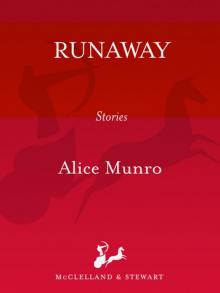 Runaway
Runaway Lives of Girls and Women
Lives of Girls and Women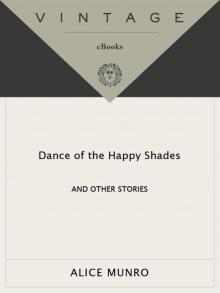 Dance of the Happy Shades
Dance of the Happy Shades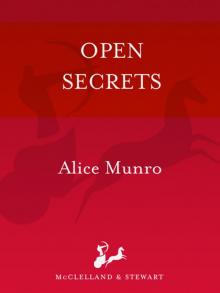 Open Secrets
Open Secrets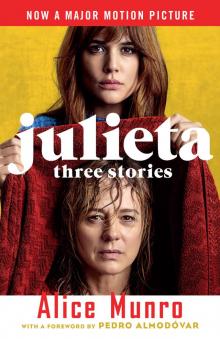 Julieta (Movie Tie-in Edition)
Julieta (Movie Tie-in Edition)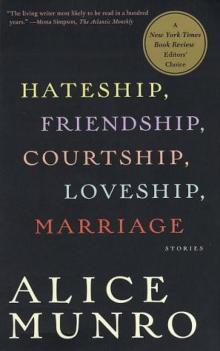 Hateship, Friendship, Courtship, Loveship, Marriage: Stories
Hateship, Friendship, Courtship, Loveship, Marriage: Stories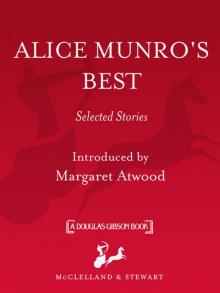 Alice Munro's Best
Alice Munro's Best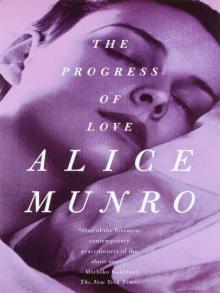 The Progress of Love
The Progress of Love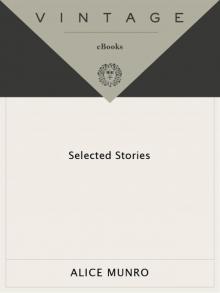 Selected Stories
Selected Stories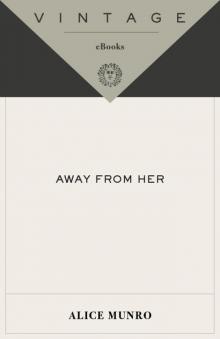 Away from Her
Away from Her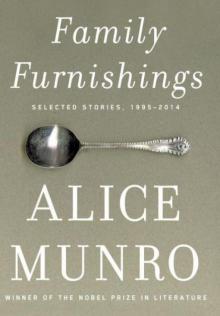 Family Furnishings
Family Furnishings Moons of Jupiter
Moons of Jupiter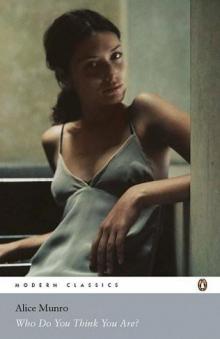 Who Do You Think You Are?
Who Do You Think You Are?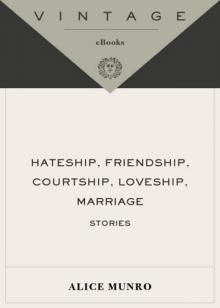 Hateship, Friendship, Courtship, Loveship, Marriage
Hateship, Friendship, Courtship, Loveship, Marriage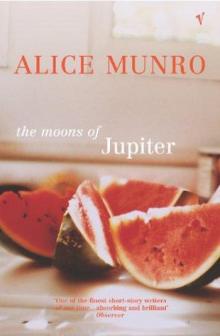 The Moons of Jupiter
The Moons of Jupiter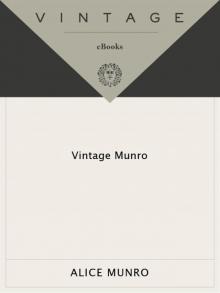 Vintage Munro
Vintage Munro The Love of a Good Woman
The Love of a Good Woman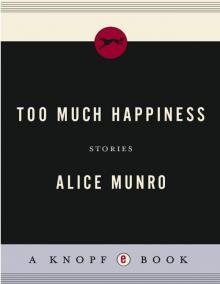 Too Much Happiness
Too Much Happiness Lying Under the Apple Tree
Lying Under the Apple Tree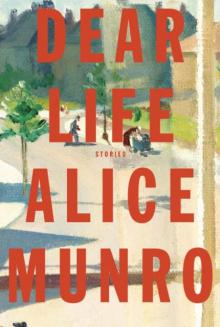 Dear Life
Dear Life Dear Life: Stories
Dear Life: Stories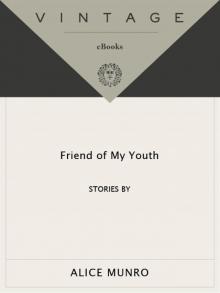 Friend of My Youth
Friend of My Youth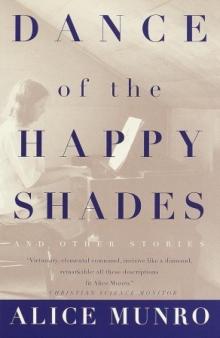 Dance of the Happy Shades: And Other Stories
Dance of the Happy Shades: And Other Stories The Beggar Maid
The Beggar Maid